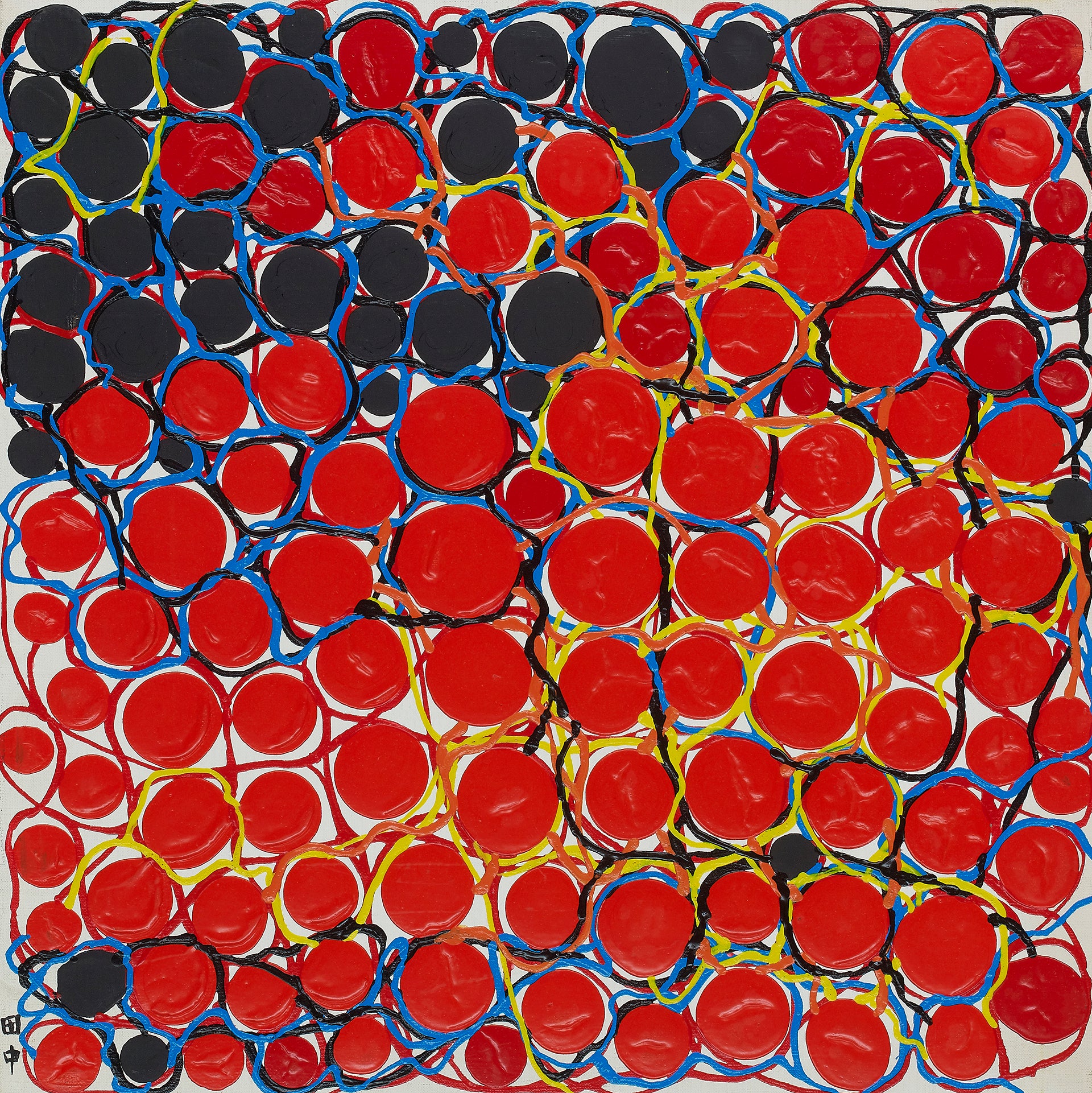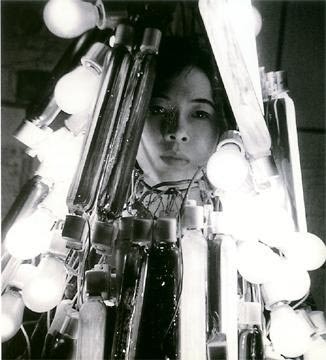COLLECTIONS
The National Museum of Modern Art (Tokyo) / The Ashiya City Museum of Art & History / Museum of Contemporary Art (Tokyo) / Hyogo Prefectural Museum of Art (Hyogo, Japan), etc.



1955年より具体美術協会に参加。20個のベルを2メートル間隔でつなげた作品、幾つもの電球や管球をくくりつけた電飾衣装を着た『電気服』のパフォーマンスで一躍注目された。このように、電気システムの装置が制作の重要なモチーフとなる。電気配線のデッサンからアイデアを得、円や曲線が複雑に入り組んだ平面作品を展開。メディウムに合成樹脂エナメル塗料を用い、滑らかな絵肌、鮮やかな色彩で独自の存在感を放つ。白髪一雄・元永定正とならぶ具体初期を代表するアーティストのひとり。欧米での展覧会も多数。
COLLECTIONS
The National Museum of Modern Art (Tokyo) / The Ashiya City Museum of Art & History / Museum of Contemporary Art (Tokyo) / Hyogo Prefectural Museum of Art (Hyogo, Japan), etc.
最新のエキシビション情報や会員限定企画をお届けします。
メールアドレス登録後、確認メールをお送りします。メール内のリンクをクリックして登録を完了してください。